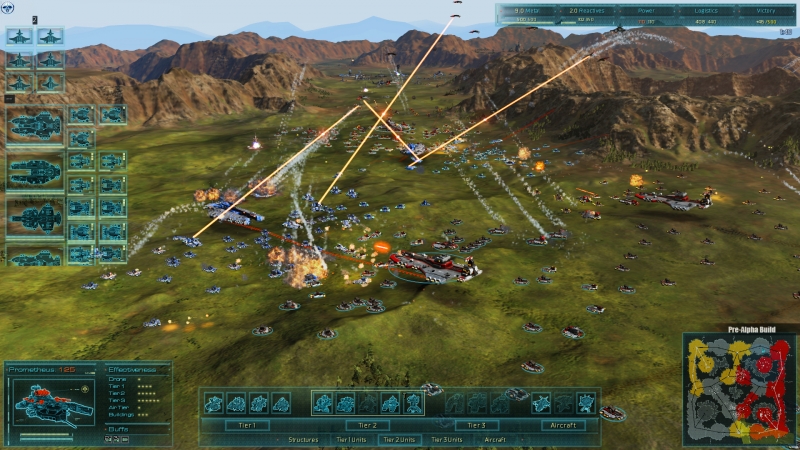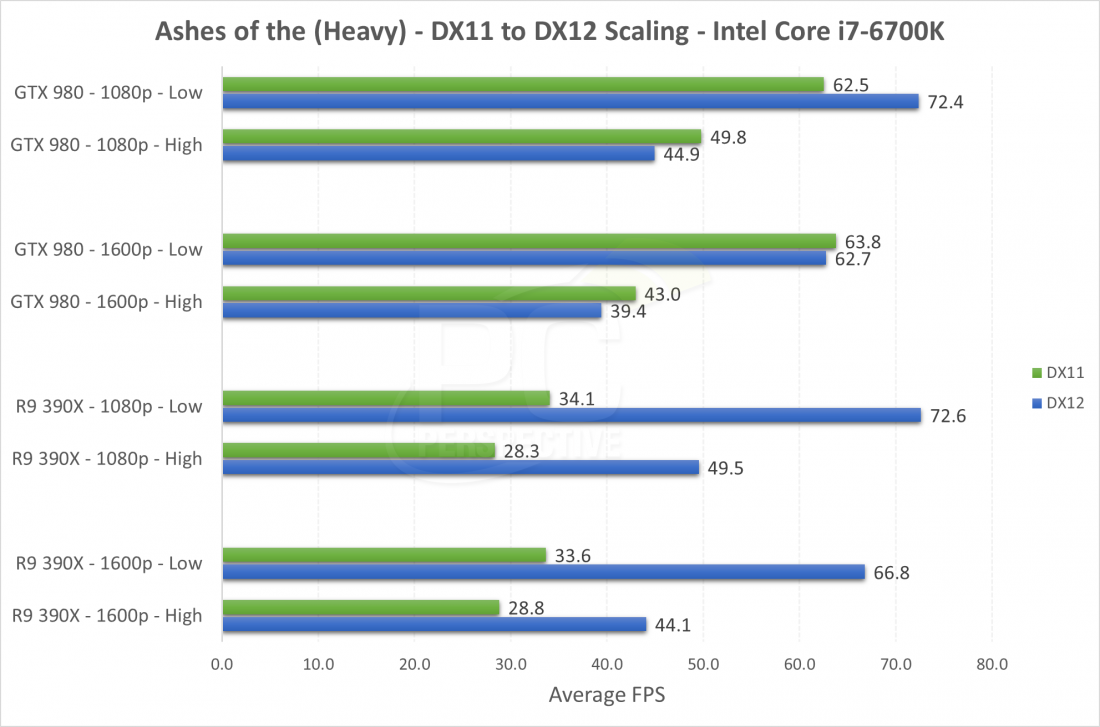The first DirectX 12 benchmark based on a real, upcoming game is now available, and the guys at PC Perspective have posted some very interesting results based on their testing of Nvidia and AMD graphics cards.
The benchmark is based on the game Ashes of the Singularity, a massive real-time sci-fi strategy game developed by Oxide Games and Stardock that's for release next year. The game uses the Nitrous engine, which has been developed to take full advantage of DirectX 12 capabilities, especially the increased number of draw calls per second and better utilization of CPU and GPU resources.
All testing was performed using a $500 Nvidia GeForce GTX 980 and a $430 AMD Radeon R9 390X at a range of resolutions and different CPUs. Ashes of the Singularity supports DirectX 11 and DirectX 12 so both were tested.
When the benchmark was run using DirectX 11, the GTX 980 was anywhere from 25 to 90 percent faster than the R9 390X. However, when the game was run in DirectX 12 instead, the gap between the two GPUs shrunk dramatically, with the R9 390X either tying with or beating the GTX 980 in most situations.
There are a couple of interesting things to note from these results. First, Nvidia's DirectX 11 drivers appear to be far superior to AMD's, as there wasn't a particularly significant jump in performance on Nvidia cards when the low-overhead benefits of DirectX 12 kicked in. There were some performance gains, especially on weak CPUs, but nothing overly amazing.
On AMD hardware, using DirectX 12 provided huge performance gains, allowing the company's cheaper R9 390X to essentially match the GTX 980. The jump in performance from the R9 390X is very significant, and shows that AMD's hardware, held back by inefficient DirectX 11 drivers could be a lot more capable than we first thought.
Nvidia was quick to dismiss the Ashes of the Singularity benchmark results, saying the game is "is [not] a good indicator of overall DirectX 12 gaming performance." While they do have a point - this is just one benchmark on one game engine showing the differences between DirectX 11 and DirectX 12 - real-world gaming benchmarks are typically far more indicative of real-world performance than synthetics like 3DMark.
PC Per's full set of results and analysis is well worth the read, so if you're interested in DirectX 12, you should head over there and read their article. It should be especially interesting for Radeon owners cards, where DirectX 12 seems to be having the biggest impact.

